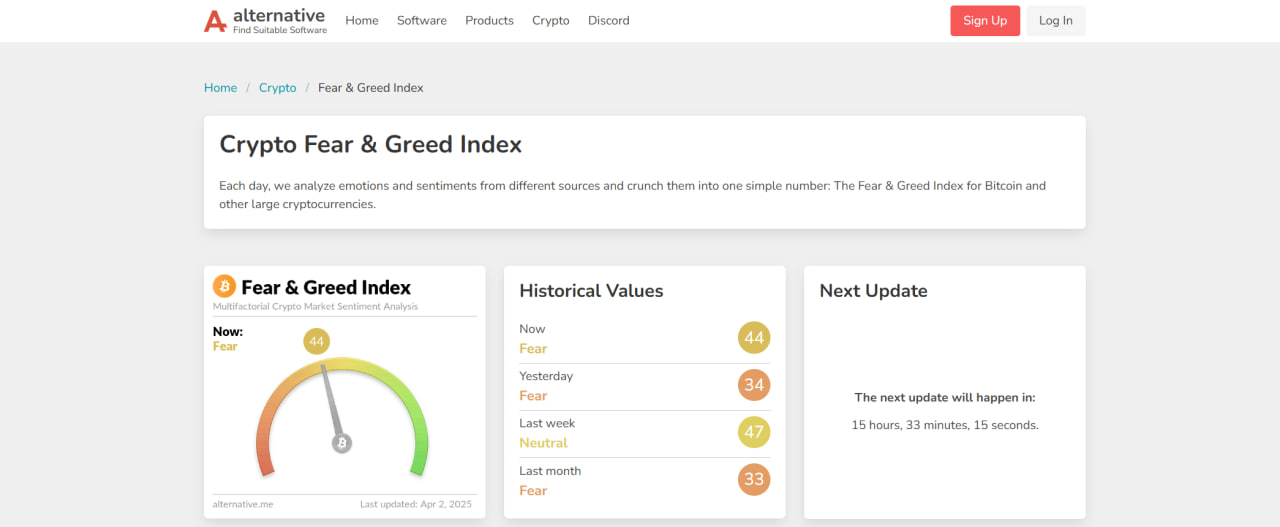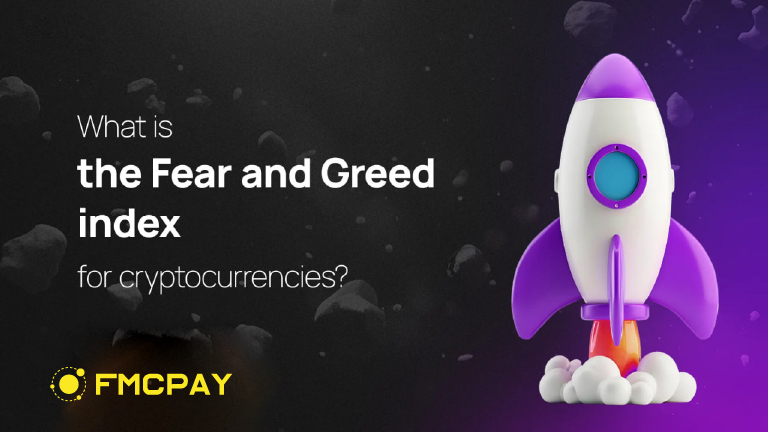In the dynamic world of cryptocurrency trading, understanding market sentiment is crucial for making informed decisions. The Fear and Greed Index serves as a valuable tool, offering insights into the prevailing emotions of investors. This article delves into the intricacies of the Fear and Greed Index, its calculation methodologies, and its applicability in the crypto market.
1. What is the Fear and Greed Index?
The Fear and Greed Index (FGI) is a sentiment analysis tool that measures the emotions driving investor behavior in financial markets. It was originally developed by CNN Business for the stock market but has since been adapted for the cryptocurrency market due to the distinct characteristics of digital assets.
By analyzing various market factors, the index provides a score ranging from 0 to 100, where lower values indicate extreme fear and higher values signify extreme greed, specifically:
- 0 to 24 represents Extreme Fear, indicating that investors are highly pessimistic and risk-averse.
- 25 to 49 represents Fear, suggesting a cautious or uncertain market environment.
- 50 represents a Neutral market sentiment.
- 51 to 74 represents Greed, meaning investors are becoming optimistic and risk-seeking.
- 75 to 100 represents Extreme Greed, indicating that investors are overly confident, often leading to speculative bubbles.

By analyzing key market indicators such as volatility, momentum, trading volume,… the Fear and Greed Index provides a snapshot of market sentiment at any given time. Since emotions like fear and greed often drive investment decisions, the FGI helps traders and investors identify potential market turning points.
For example:
- High fear levels may suggest that assets are undervalued due to panic selling, presenting a buying opportunity.
- High greed levels may indicate that prices are overinflated, increasing the risk of a market correction.
While the Fear and Greed Index is not a definitive trading signal, it serves as a useful supplementary tool to assess market sentiment alongside technical and fundamental analysis.
2. Where to Check the Fear and Greed Index Today?
For investors seeking real-time updates on the Fear and Greed Index, several platforms offer this information:
- CNN Business: Created the Fear and Greed Index as a tool to assess stock market trends and determine whether stocks are fairly valued. So far, it has remained highly accurate and can serve as a reference for the crypto market.
- Alternative.me: Provides the alternative version of the index for the crypto market, offering daily updated, historical values and a graphical representation of sentiment over time.
- CoinMarketCap: Features the CMC Crypto Fear and Greed Index, a proprietary tool that measures the prevailing sentiment in the cryptocurrency market.
These platforms serve as valuable resources for traders and investors aiming to stay informed about market sentiment shifts.
3. How is the Fear and Greed Index Calculated?
The calculation of the Fear and Greed Index involves analyzing multiple market indicators to gauge investor sentiment. While the core indicators are generally the same, each platform may use different methods for measurement. Let’s dive into the details.
3.1. CNN’s Fear and Greed Index
CNN Business’s index evaluates seven factors, each assigned a value between 0 and 100. The average of these factors determines the overall index score:
- Stock Price Momentum: Measures the S&P 500’s performance relative to its 125-day moving average.
- Stock Price Strength: Assesses the number of stocks hitting 52-week highs versus lows on the NYSE.
- Stock Price Breadth: Analyzes trading volumes in advancing versus declining stocks.
- Put and Call Options: Examines the ratio of put options versus call options.
- Junk Bond Demand: Looks at the spread between yields on investment-grade bonds and junk bonds.
- Market Volatility: Utilizes the CBOE Volatility Index (VIX) to gauge market fear.
- Safe Haven Demand: Compares returns on stocks versus treasury bonds.
Each indicator reflects a different aspect of market behavior, contributing to a comprehensive sentiment analysis.
3.2. Alternative’s Fear and Greed Index
Their current Fear and Greed Index is exclusively focused on Bitcoin due to its significant impact on cryptocurrency market volatility. There are plans to introduce separate indices for major altcoins, but these have not yet been implemented.
Alternative.me’s Fear and Greed Index is calculated using data from five key sources. Each data point retains the same value as the previous day to effectively illustrate sentiment trends in the cryptocurrency market.

Volatility (25%)
This metric evaluates Bitcoin’s current volatility and maximum drawdowns, comparing them with the 30-day and 90-day average values. A significant increase in volatility is interpreted as a sign of heightened market fear.
Volume/Market Momentum (25%)
Market momentum and trading volume are assessed relative to their 30-day and 90-day averages. When high buying volumes are observed in an upward-trending market, it suggests excessive optimism or greed.
Social Media (15%)
Although Reddit sentiment analysis is still in development, Twitter activity is actively monitored. Posts containing specific cryptocurrency-related hashtags are analyzed based on frequency and interaction rates. A substantial increase in engagement is considered an indicator of growing public interest, which may signal a greedy market sentiment.
Surveys (15%) – Currently Paused
Surveys were previously conducted in collaboration with Strawpoll.com, a public polling platform, to gauge market sentiment. Typically, these polls received between 2,000 and 3,000 responses, offering insights into investor attitudes. While this data played a valuable role in earlier research, it is no longer a primary component of the index.
Dominance (10%)
An increase in Bitcoin dominance is often associated with a shift toward safer investments, reflecting a fearful market. Conversely, a decline in Bitcoin dominance suggests increased investor appetite for riskier altcoins, often signaling heightened greed. The same logic can be applied to individual altcoins, where rising dominance may indicate bullish sentiment specific to that asset.
Trends (10%)
Google Trends data is utilized to analyze search volume changes for Bitcoin-related queries, along with associated trending searches. For example, a surge in searches for terms like “Bitcoin price manipulation” may indicate rising fear in the market. These insights are incorporated into the index to provide a broader sentiment analysis.
3.3. Coinmarketcap’s Fear and Greed Index
This Fear and Greed Index crypto is derived from five key components, each offering a unique perspective on market sentiment and investor behavior. These factors are analyzed collectively to provide a comprehensive outlook on market emotions.

Price Momentum
This metric examines the price trends of the top 10 cryptocurrencies by market capitalization, excluding stablecoins. It evaluates how these assets perform relative to one another and the broader crypto market, helping to identify emerging bullish or bearish trends.
Volatility
The index incorporates data from the Volmex Implied Volatility Indices (BVIV and EVIV) for Bitcoin (BTC) and Ethereum (ETH). These indices provide a forward-looking estimate of expected price fluctuations over the next 30 days, offering insights into market stability and risk perception.
Derivatives Market
The index assesses the Put/Call Ratio in Bitcoin and Ethereum options markets. A higher proportion of put options relative to call options suggests increased fear among investors, indicating a bearish market outlook. Conversely, a lower ratio reflects rising confidence and potential bullish sentiment.
Market Composition
This component measures Bitcoin’s market position relative to stablecoins using the Stablecoin Supply Ratio (SSR). The SSR compares Bitcoin’s market capitalization to that of major stablecoins, providing insights into liquidity flows and investor preferences between risk assets and stable assets.
CMC Proprietary Data
CoinMarketCap incorporates proprietary data, including social trend keyword searches and user engagement metrics, to gauge public sentiment. This factor helps capture retail investor interest, emerging market trends, and shifts in sentiment that may not be reflected in traditional market indicators.
4. How accurate is Fear and Greed index in Crypto?
While the Fear and Greed Index is considered a fairly reliable sentiment indicator, it should not be solely relied upon for trading decisions. Successful traders and analysts often incorporate multiple tools, such as technical chart analysis and on-chain data for BTC, ETH, and other assets, to gain a more comprehensive view of market sentiment.
One limitation of the index is that it provides a broad market overview and updates relatively slowly. As a result, it is more suited for long-term investors rather than short-term traders who require real-time insights.

Additionally, the index does not predict the magnitude of market sentiment shifts. For example, while it is well understood that a period of extreme greed is often followed by a correction, the extent and timing of such a shift remain uncertain. This makes the index ineffective for pinpointing when a market correction will occur.
Moreover, in both bull and bear markets, the Fear and Greed Index may occasionally reflect sentiment opposite to the prevailing trend. However, this does not necessarily indicate a full trend reversal. Instead, it could signal a temporary correction, helping to establish a more sustainable long-term uptrend or downtrend.
Conclusion
The Fear and Greed Index is a powerful tool for understanding market sentiment, helping traders and investors assess whether the crypto market is in a state of fear, neutrality, or greed.
However, while the Fear and Greed Index can indicate potential buying or selling opportunities, it should not be used in isolation. The crypto market is highly volatile, and sentiment can shift rapidly due to external factors. Traders should always complement sentiment analysis with technical indicators, fundamental research, and risk management strategies to make well-informed decisions.
For those looking to stay ahead of market trends and make informed trading decisions, keeping track of real-time updates is essential. Stay informed with the latest crypto insights and trading news at FMCPAY to enhance your investment strategies today!

